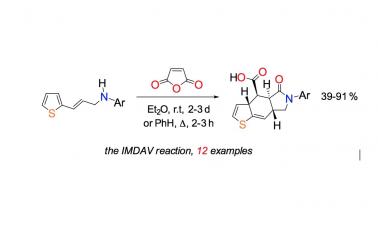Scientists Have Discovered a Faster and More Efficient Way to Synthesize Anabolic Steroids
Scientists Have Discovered a Faster and More Efficient Way to Synthesize Anabolic Steroids
Scientific researchers have discovered a faster and more efficient method of synthesizing anabolic steroids and other hormones that contain a signature six-membered rings. The new method has significant advantages over traditional methods and could reduce the manufacturing costs associated with hormone-like pharmaceutical drugs.
 Researchers affiliated with the Universidad Rusa de la Amistad de los Pueblos (RUDN) in Russia and the Ivan Franko National University in Ukraine published their discovery in the weekly organic chemistry journal called the Tetrahedron Letters on October 25, 2017.
Researchers affiliated with the Universidad Rusa de la Amistad de los Pueblos (RUDN) in Russia and the Ivan Franko National University in Ukraine published their discovery in the weekly organic chemistry journal called the Tetrahedron Letters on October 25, 2017.
Fedor Zubkov, the assistant professor of the Department of Organic Chemistry at RUDN, provided a technical description of the steroid synthesis breakthrough to Phys.org.
"The signature moment of the synthetic part is a tandem cascade of reactions – the reactions proceed successively in the same flask under the same reaction conditions: acylation of the nitrogen atom of the starting 3-thienylallylamine with maleic anhydride, the intramolecular Diels-Alder reaction and subsequent aromatization of the cycloaddition adduct," said Zubkov.
Anabolic steroids are usually only in the news in discussions related to athletic doping and their uses as performance-enhancing drugs (PEDs). However, research involving steroids of all types – sex hormones (testosterone, estrogen, progesterone), anabolic steroids (nandrolone, trenobolone, methandienone), anti-inflammatory steroids (cortisone, dexamethasone), neurosteroids (DHEA), secosteroids (Vitamin D) – have been a highly-respected area due to their numerous therapeutic and medical applications.
Steroid research has been so important to the scientific community that the Royal Swedish Academy of Sciences has awarded no less than seven Nobel Prizes for steroid-related research between 1927 and 1975.
For example, Schering and Ciba pharmaceutical research teams shared the 1939 Nobel Prize in Chemistry for their discovery of an inexpensive way of synthesizing testosterone. The Mayo Clinic’s Philip Hench and Edward Kendall won the 1950 Nobel Prize in Medicine for the development of cortisone. Roger Guillemin, Andrew Schally and Rosalyn Yalow won the 1977 Nobel Prize in Medicine for their work on steroid synthesis.
While the discovery is scientifically noteworthy, it is unlikely that it will have any meaningful impact for bodybuilders and athletes who use black market steroids. Black market steroids have never been cheaper. The barriers to entry have never been lower for underground laboratories (UGLs). And the raw steroid powder material has never been easier to acquire in bulk quantities from overseas powder sources in China and elsewhere.
The bottom line is that steroids are already incredible cheap given the currently available methods of hormone synthesis.
Source:
RUDN University. (November 15, 2017). Chemists suggest a new way to synthesize steroid analogs. Retreived from phys.org/news/2017-11-chemists-steroid-analogs.html



 Researchers affiliated with the Universidad Rusa de la Amistad de los Pueblos (RUDN) in Russia and the Ivan Franko National University in Ukraine published their discovery in the weekly organic chemistry journal called the Tetrahedron Letters on October 25, 2017.
Researchers affiliated with the Universidad Rusa de la Amistad de los Pueblos (RUDN) in Russia and the Ivan Franko National University in Ukraine published their discovery in the weekly organic chemistry journal called the Tetrahedron Letters on October 25, 2017.